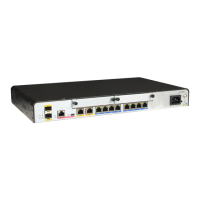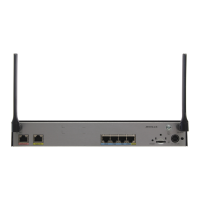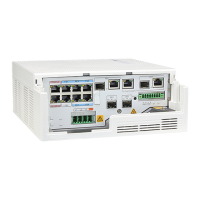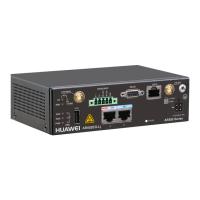Procedure
Step 1 For the details, see Configuring VPN Instances.
----End
3.4.3 Binding an Interface with a VPN Instance
After associating an interface with a VPN instance, you can change the interface to a VPN
interface. As a result, packets that pass through the interface are forwarded based on the
forwarding information of the VPN instance, and Layer 3 attributes are deleted. These Layer 3
attributes, such as the IP address and routing protocol that are configured for the interface, need
to be re-configured if required.
Context
Perform the following steps on the PE that is connected to the CE.
Procedure
Step 1 Run:
system-view
The system view is displayed.
Step 2 Run:
interface interface-type interface-number
The view of the interface that is to be bound with the VPN instance is displayed.
Step 3 Run:
ip binding vpn-instance vpn-instance-name
The interface is bound to the VPN instance.
NOTE
The running of the ip binding vpn-instance command on an interface can delete the Layer 3 attributes,
such as the IP address and routing protocol. If these Layer 3 attributes are still required, configure them
again.
An interface cannot be bound to a VPN instance that is not enabled with an address family.
Disabling an address family of a VPN instance deletes the Layer 3 attributes, such as the IP address and
routing protocol of the interface bound to the VPN instance. Disabling all the address families of a VPN
instance unbinds all the bound interfaces from the VPN instance.
Step 4 Run:
ip address ip-address { mask | mask-length }
The IP address is configured.
----End
3.4.4 (Optional) Configuring a Router ID for a BGP VPN Instance
IPv4 Address Family
You can configure different router IDs for BGP VPN instance IPv4 address families on the same
device.
Huawei AR1200 Series Enterprise Routers
Configuration Guide - VPN 3 BGP MPLS IP VPN Configuration
Issue 01 (2012-04-20) Huawei Proprietary and Confidential
Copyright © Huawei Technologies Co., Ltd.
72

